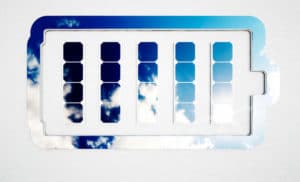
Scientists have discovered structure of a sodium-based material that could enable the materials to be used as an electrolyte in solid-state batteries – one that is safer than conventional lithium-based materials.
The claims come via researchers from Penn State and Pacific Northwest National Laboratory (PNNL), who are apparently in the process of fine-tuning the material using a design approach they hope will speed-up research in this area.
The rechargeable batteries in most modern day smartphones and portable gadgets use a liquid, lithium-based electrolyte, the part of a battery responsible for transferring charged ions in a solid-state battery.
The team’s new material is composed of sodium, phosphorous, tin and sulphur and has a tetragonal crystal shape
“Liquid electrolytes have safety issues because they are flammable,” said Donghai Wang, associate professor of mechanical engineering at PNNL. “That has been the driving force for us to find a good material for use in solid-state batteries.”
The team’s new material is composed of sodium, phosphorous, tin and sulphur and has a tetragonal crystal shape so, where it has defects or spaces where certain sodium, tin and sulfur atoms would be, it still allows for the transfer of ions.
This material should not only be cheaper to use because sodium is much more abundant than lithium, but it would also be safer in use, said the researchers.
When you heat liquid electrolytes up to 150 degrees Celsius, they will catch fire or release a lot of heat that could damage other battery or electronic components. Our material performs well up to 400 degrees
“Our material has a wide voltage window as well as high thermal stability,” added Zhaoxin Yu, postdoctoral researcher in mechanical and nuclear engineering at PNNL.
“When you heat liquid electrolytes up to 150 degrees Celsius, they will catch fire or release a lot of heat that could damage other battery or electronic components. Our material performs well up to 400 degrees Celsius.”
According to a Nano Energy report, the team said that the material has room-temperature ionic conductivity about one-tenth that of liquid electrolytes used in today’s batteries. The important discovery, they said, is the specific configuration of defects within the crystal structure.
They added that the discovery also shows that there’s a pathway for creating a new family of advanced sodium-ion superionic conductors, classes of solid materials that exhibit an unusually high ionic conductivity, making them good materials for making batteries.





